
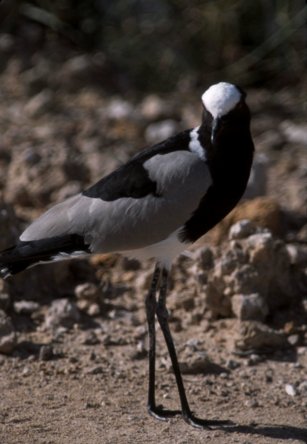
Brilliant Avians
There are many varieties of very striking birds in Namibia. In fact, Namibia draws avid bird watchers from all over the world. I cannot positively identify either of these. I think the one on the left is called a Roller, or something like that. One of the most extraordinary birds which we saw frequently at Eden, the green and gold bee-eater, I never could catch on film. The brilliant crimson breasted shrike was also seen several times.
|


Waterfowl in the Desert
As we visited Etosha in May at the beginning of winter and only a few weeks after the end of the rainy season, there was still a lot of water in parts of the park and water birds remained. These Egyptian ducks were still plentiful. I had to enlarge the image of the crane so it is not as sharp.
|

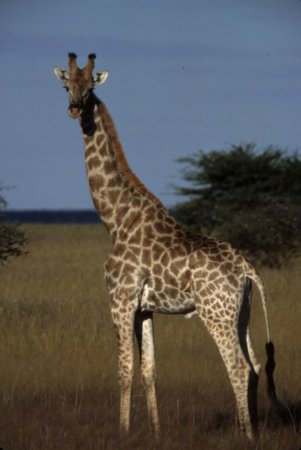
Giraffes
Few animals exemplify Africa as strongly as the giraffe. I'm very fond of these creatures and was gratified to see as many as we did in Eden and in Etosha. Considerable herds of giraffes are found in the eastern side of the park.
|
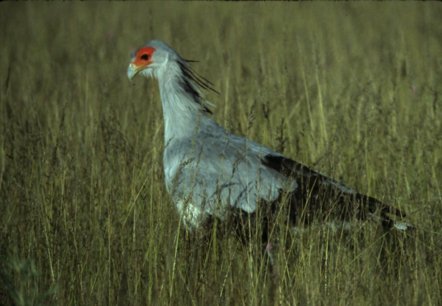
Secretary Bird
I took many photographs of these birds (among my favorites, even though they eat snakes), but few turned out well since the birds move rapidly and don't like to be closely approached. This fellow stalked beside our Land Cruiser for some distance in a most threatening manner before finally taking wing.
|
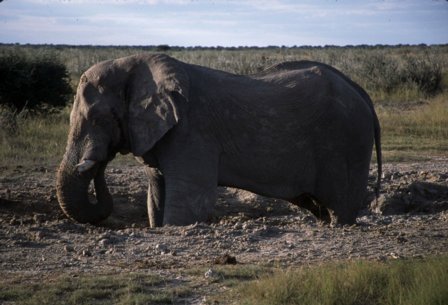
Mud Bath
This big bull was luxuriating in a mud hole as we drove up. He continued to wallow and to toss mud over himself as we snapped a few shots, before rearing to his impressive full height and ambling along, much refreshed.
|
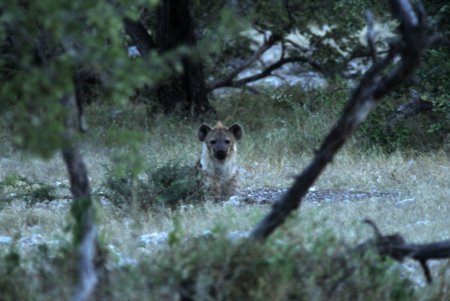
Spotted Hyena
This mother hyena was observed just at twilight sitting at the entrance to her den. My brother caught sight of a couple of young pups squabbling over a bone.
|
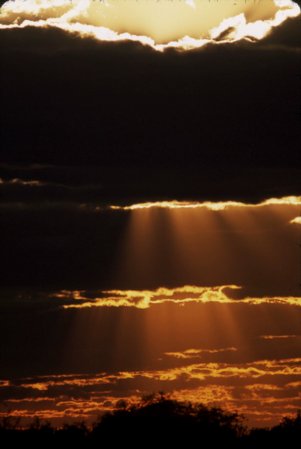
A Fantastic Sky
The winter sky of Namibia shortly before sunset presented an almost surreal vista on the evening of our first day in Etosha.
|
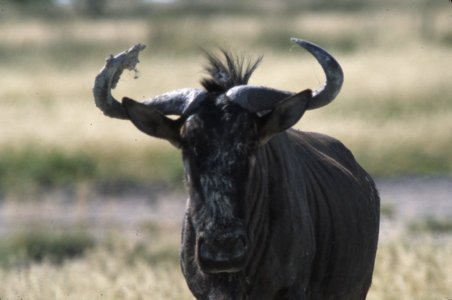
Blue Wildebeest
This slightly deranged appearing wildebeest paused from his mud hooking and posed for a closeup.
|

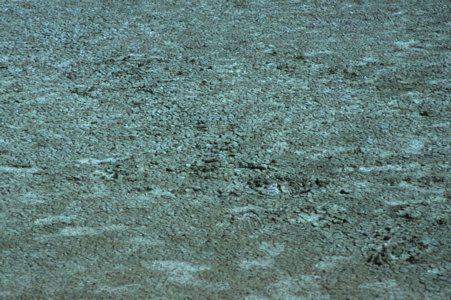
The Pan
Looking north into the heart of the Etosha Pan itself the vast emptiness of this ancient lake bed stretches far beyond the horizon. On the right you can see what composes the earth.
|
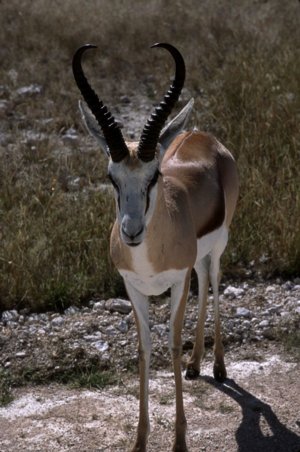
Super Springbok
This outstanding ram gazed quizzically at us as we drove by. World class trophy rams like this were not unusual in the protected environs of Etosha.
|

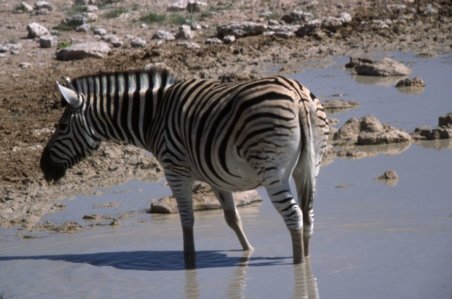
My Favorite African Animals
The zebra is ubiquitous in Etosha and possibly as numerous as the springboks. We certainly saw many hundreds of them. The natural base coloration varies from pure white to a light tan on the upper body and shadow striping is seen on many animals, a feature of the Burchell's zebra localized to the western distribution of the species.
|

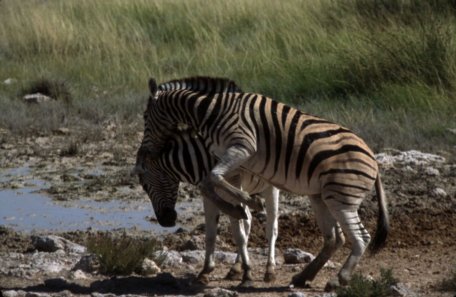
Scenes of Zebra Life
I was fortunate enough to capture some glimpses of zebra life: a mare grooming her foal, and two young stallions engaging in mock fighting as they begin to attain maturity.
|

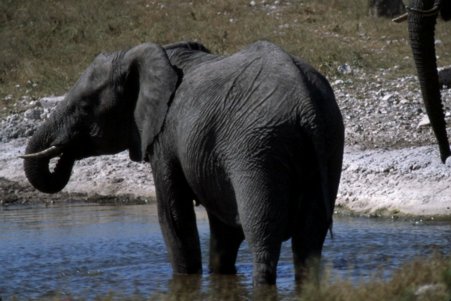
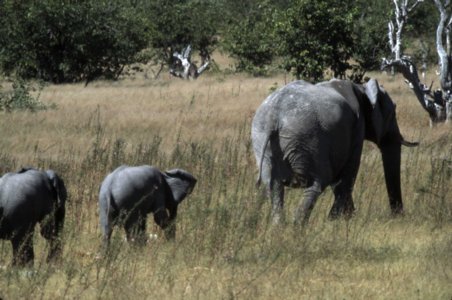
A Party of Cow Elephants and Calves
This group of elephants appeared just as we drove to the waterhole. Led by an aged matriarch, they marched down to the water herding the calves between them. They drank and groomed themselves for 15 minutes or so before filing away back into the bush.
|

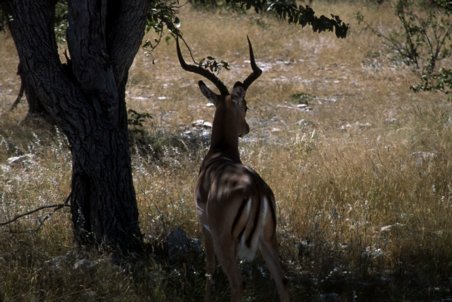
The Endangered Angolan Impala
The Angolan, or Black-Faced, Impala is the indigenous species of Namibia. Its range is now largely restricted to Etosha. This ram insisted on showing us his backside, but he really does have black facial markings.
|
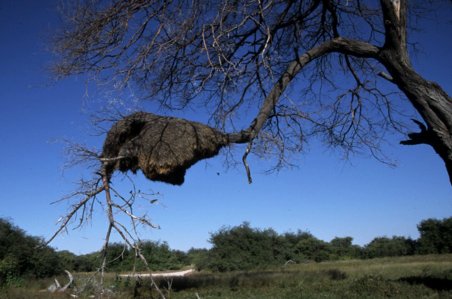
A Weaver Bird Colony
Most of the weaver birds that we saw were the ordinary type that make individual nests, often clustered like some kind of curious fruit in a single tree. There is another kind of weaver (the "urban" variety) that has taken this one step further. They make all their nests collectively like a vast sprawling housing project in a tree. The thing grows until the bough breaks and then they start over with a new limb. This particular nest is over six feet in length.
|


Gemsbok
This is one of the most striking of the antelopes, the giant Oryx or Gemsbok in Afrikaans. It is the signature animal of Namibia, the king of the deserts. Oryx can survive without any water for long periods and have the ability to let their body temperature rise to heat stroke levels without harm. They gallop just like a horse with their long tails bouncing behind. Their horns are fierce weapons and ideal for getting at those hard to reach places.
|
This web page was designed by HTL
Ulfhere@Rathcoombe.net
Copyright 2001 -- All Rights Reserved
|



























